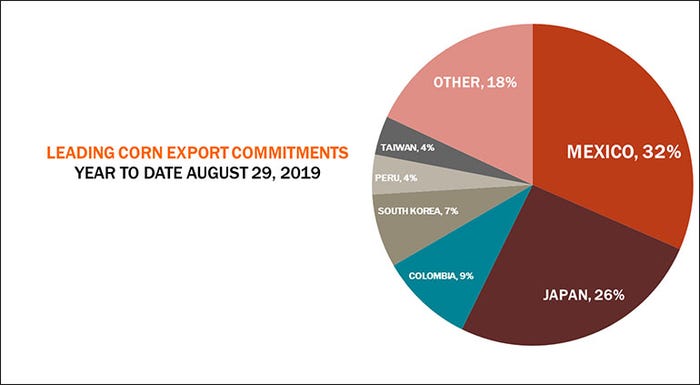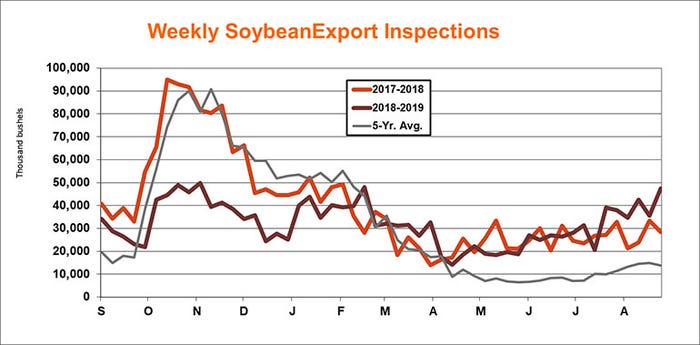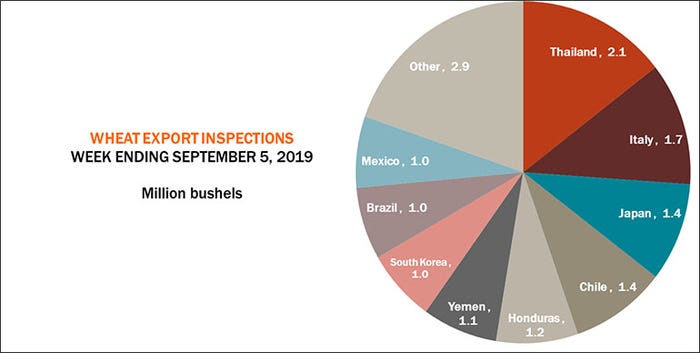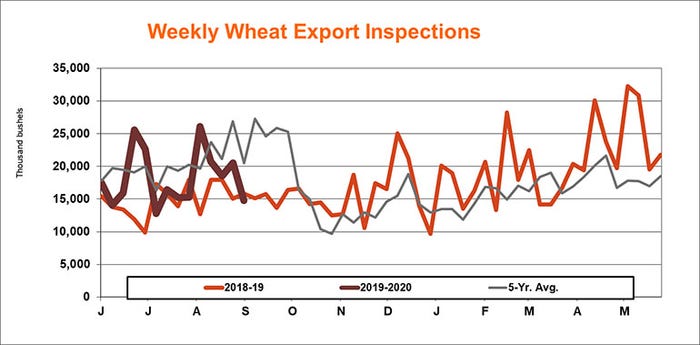
For the week ending September 5, USDA didn’t have a lot of positive news to share in its latest export inspection report, out Monday morning.
“Export inspections continue to mostly underwhelm as the 2019 marketing years get underway for corn and soybeans, with wheat also a bit thin for the latest week,” according to Farm Futures senior grain market analyst Bryce Knorr. “The corn and soybean totals don’t mean much by themselves, because they cover only the first five days of the new marketing year. But analysis on individual inspections reports provides clues about how USDA may adjust its forecast of 2018 crop exports in Thursday’s reports.”

While the agency may wait until official Census data comes in, total corn shipments for the 2018 marketing year look to be around 45 million below the government’s current projection, Knorr notes. Inspections were far below that estimate, but consistently lagged behind Census totals this year.
Last week’s corn export inspections were for 23.2 million bushels. That was hardly impressive, despite coming in moderately higher than the prior week’s tally of 14.1 million bushels and just above trade estimates that ranged between 15 million and 23 million bushels.
Mexico was by far the No. 1 destination for U.S. corn export inspections last week, with 9.3 million bushels. Other leading destinations included Japan (4.6 million), Saudi Arabia (2.3 million) and China (2.3 million).


“Soybean exports, by contrast, could see an increase Thursday as China continues to take delivery of purchases made as a goodwill gesture during the brief cease-firm in the trade war,” Knorr adds.
But last week’s soybean export inspection tally was just for 33.3 million bushels, falling from the prior week’s take of 47.4 million bushels and on the low end of trade estimates ranging between 25 million and 44 million bushels.
China was the No. 1 destination for U.S. soybean export inspections last week, with 15.0 million bushels. Other top destinations included Mexico (2.6 million), Egypt (2.4 million), South Korea (2.1 million), the Netherlands (2.1 million) and Saudi Arabia (2.0 million).


Wheat export inspections also eased week-over-week, from 20.5 million bushels the prior week down to 14. 8 million bushels. That tally was also on the low end of trade estimates that ranged between 14 million and 23 million bushels.
Wheat export inspections were headed to a wide range of countries last week, including Thailand (2.1 million), Italy (1.7 million), Japan (1.4 million), Chile (1.4 million), Honduras (1.2 million), Yemen (1.1 million) and others.


About the Author(s)
You May Also Like






